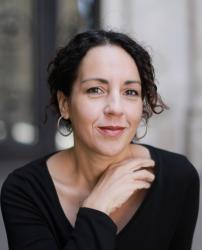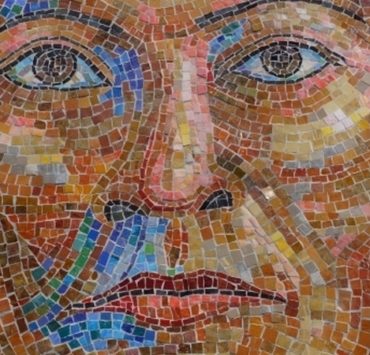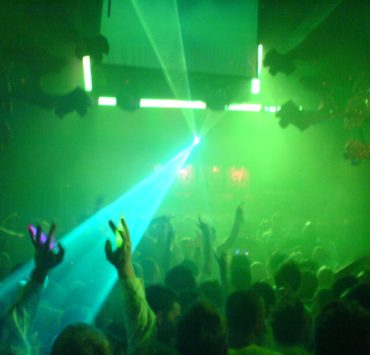
A
few months ago visual artist, Lucia Hierro wrote to me via fb:
Hi Angie. I’m a Dominican artist born and raised in Wash Heights/Inwood (hands raised, woop woop). I have recently fallen in love with your writing. If you find yourself in NY this summer my work will be up in the Bronx Museum’s AIM biennial. Would love to chat.
And so we did…
AC: What is the best advice you have been given as an artist? A human?
LH: My mentor at Purchase where I received my BFA was artist George Parrino (RIP) always told me to party in the studio. It goes hand in hand with that eat, sleep and breathe art thing…he had this philosophy that if you’re truly an artist you surround your life with really interesting people and interesting things to look at… so that there’s a seamless transition between the studio, home, social life. I try to live by that. It makes life worth waking up to every morning. Whenever I’m not doing this- bad things have followed!
I have to add another thing I learned at Purchase, it happened in George’s class around Sophomore year, I wanted to be the best in George’s class and for awhile I was, that is until this kid, I think his name was Jack, started bringing in stellar work, like out of nowhere he was making really great work and I didn’t want to admit it. It was what George called a Quantum-Leap! I gave him a really rude critique, that had very little to do with his work and more to do with me disliking him. As we transitioned to the next student’s work, he stopped and calmly said, “you really should stop worrying about me being better than you and just focus on making your work better”. To this day I remember that ache in my stomach.
Are there any similar stories you remember? Ones that really taught you some life lessons?
AC: I’ve had many great teachers but the one that comes to me right now is Dr. Carol Boyce Davies. I met her when I was an undergraduate at SUNY Binghamton. Back then I was clueless but I knew I wanted to write and I visited her office often. She introduced me to Caribbean and African American literature. She lent me the books right off her shelf and I devoured them. It was then that I realized that not all writers were dead, white and male. What I also understood then is how important it is for us to mentor and share our resources with each other. Her generosity with her time, books, was instrumental in my path as a writer. And now that I work as an Assistant Professor I realize that what she did for me and many other students, was the kind of emotional, political and often invisible labor that few people in academia make the time to do.
What do you think are the challenges of making art today?
LH: Too many professionals being created in art school as opposed to creative creatives! You know, living an exciting life, taking in the world and learning from it, letting all those things inform the work. I’m serious. If you find yourself bored with some contemporary art or art that’s behaving sort of the way you expect art to behave, like neatly packaged essays about what art should be — take a look at that artist day to day — that should clear up why. I also feel that because my narrative isn’t traditionally found in the history of art or in literature, until writers like yourself or Junot Diaz, it’s difficult for people to really find a point of reference to my work.
AC: In an interview you did before attending the MFA at Yale you named Matisse, Giotto di Bondone, Coco Fusco, Kara Walker, cartoons and philosophy as influences on your aesthetics. What has changed post your MFA?
LH: I think I still love all things/people mentioned but definitely feel I’ve lost this imposed sense of reverence to particular things/people. I try to filter as much information or data as possible through my particular lens and hope for the best on the other end. I think it takes the burden off of influence to think of oneself as a master remixer.
AC: So is your NewYorker Collage Series that uses the NewYorker as a material a provocation? In some ways, your interventions Dominicanize the NewYorker, making Dominicans in New York visible in a magazine that rarely features Dominicans or Latin@s.
LH: The New Yorker… I have such a love/hate relationship with the New Yorker. On the one hand it’s the one magazine left with more words than images…showcases new writers, political criticism etc. However, the target audience for the magazine is too self congratulatory, “I’m a liberal! I’m really in touch! via this publication”.
[sliders id=”484″]
The New Yorker Collage Series is ongoing, and the pieces are shown together. They started in 2012-present. Dimensions are 8×11 (mostly).
AC: Who are some contemporary artists we should be paying attention to?
LH: I love so many…and everyday I learn about new ones. I have to mention my homegirl Jordan Casteel (Yale MFA’14) ’cause her paintings have this intimate feeling I don’t even know how to describe, it’s not a superficial stylized thing. Awol Erizku is another one to watch out for. He’s from the South BX. Ronny Quevedo (Yale’12), Mariana Garibay Raeke (Yale’14), Kenny Rivero (Yale’12) a Dominican artist from Washington Heights. Devin Troy Strother and Joiri Minaya (Parsons BFA’13) another Dominicana that is just going to be so huge I hope I can keep up. There are just so many amazing artists on the verge it would take me forever to go through my mind’s rolodex.
AC: In the past, one of your subject matters was hair? Why and is that still a subject that inspires or provokes you?
LH: Hair is such a big deal in the Dominican community. I was really thinking about hair when I was in undergrad ‘cause I had a weird experience with a White boyfriend who preferred my hair when it was straight. I think I was angrier at the fact that I sort of agreed with him at the time. We were both in Kate Gilmore’s performance art class at Purchase so I made a video performance out of the argument. He’s the hand in that video I made where I’m getting my hair straightened. I don’t know if lately it’s something that provokes me as much as it’s something I’ve accepted as a part of a Dominican woman’s way of life, however complicated that may be. Who knows, maybe I’ll revisit it. There’s always some little reference to the daily upkeep of hair scattered here and there in the work. I’m currently making a still life and some pinchos are laying around in the piece. I’ve always liked to play around with my hair and I like that I have that freedom. I’m less hard on myself for liking to mix it up from time to time.
AC: In retrospect, how do you think growing up around musicians made an impact on your work?
LH: Music is a major part of my life. My father only ever had one job (not counting the fathering part) that was to be a musician. My brother Chris has carried the same work ethic -eat, sleep, breathe music. I think the most important thing I learned growing up with a dad in a tough creative field is that to really do this thing to its fullest you can’t cheat on it. You have to really stick to it. There have been moments where I want to quit but I can’t imagine doing anything else. I used to watch my brother organically write a song. The song would start to take shape… slowly.. .sometimes it would go from being a slow ballad to a pop song. As if the song itself knew what it wanted to be way before my brother shaped it. I think I do the same thing with my work; it kind of builds slowly. I start with a general idea and then I think of the hook. Then the details are important because they carry the layers of meaning, kind of like lyrics. I’m actually working on making decisions quicker. Eventually I want to do something with sound, maybe make some music, who knows. Music is a huge part of my studio practice!
In fact I made a playlist to answer these questions! Check it out here.
Who do you listen to these days?
AC: I haven’t been asked this question in a long time and I hate to admit it but much of what I listen to is dictated by my seven year old. Thank goodness he has decent musical taste. Currently we have been looping the song, 1977 by Ana Tijoux. When I am working on my novel I usually attach different songs to different characters. It helps me differentiate from one character to another. For my newest book that is set in New York City 1965 I listened a lot to this CD: La Bella Epoca De La Salsa, Vol. 3: Salsa In Nueva York 1958-1964.
What and who excites you?
LH: So many things get me hyped! This is a really tough question. When I go to my friends’ art shows, theatre shows, music performances (they’re all so talented!!) it makes me want to work harder. Finding a good book, like when I found out about you!! I was like “THIS”. When Drake surprises me with yet another good album, lol Um, Kendrick Lamar! Genuine people, really smart beautiful genuine people-not the kind that only know the sparknotes version of things but like those in depth, folks. When I met Lin Manuel Miranda (writer and actor of In the Heights and Hamilton) I thought he was just the most exciting ball of energy. I love meeting people like that.
AC: I love the way you play with text in naming your works like, “DAfuck and instaposeabstract” and “Mi Map de Nueva Yol.” It made me wonder what you have been reading? Who are some writers that have inspired you?
LH: I just lost a copy of Swann’s Way at a Dominican Beach Resort, funny enough, I really loved the intro and decided Proust is my peoples. I recently read Chimamanda Ngozi Adichie’s Americanah and Bad Feminist by Roxane Gay. When I was in High School (I went to The Beacon School just down the block from LaGuardia) I was in a creative writing class called Playreading/Playwriting, we read, dissected and wrote plays. So I would have to say that texts that have inspired me have been plays, like Angels in America. I remember when I first read that. Last Days of Judas, Iscariot, what a well written play. As well as great lyricist, Violeta Parra, Silvio Rodriguez, Jorge Drexler, the list goes on.
AC: What moment in school or otherwise do you feel were significant in your process of becoming an artist and making your work?
LH: I guess I started answering that in a previous question. Honestly it was such a group effort that gave me that support and push I needed to really pursue the arts. It’s a bit of a long story. I was born and raised in Washington Heights/Inwood and moved to the Dominican Republic when I was in 7th grade. So I spent 8-10th in the Dominican Republic. After my folks split, my mother and I moved back to NY and she wanted to place me in a creative high school. Most were overcrowded. So my mother went to the board of ed for guidance and found out about Beacon from a really nice lady whose daughter had attended the school. Beacon was such a perfect fit at the time because it was a small alternative school, so everything about their teaching methods was a bit untraditional. My homeroom advisor, Mr. Rosenbluth really helped me find my way, along with my art teacher who pushed me to apply to the Cooper Union Saturday Program where I met Marina Gutierrez, who I am so grateful to have met. The SatPortfolioPrep Program was a 9-5 thing. I would take the train all the way down to CooperSquare and spend Saturdays figure drawing, discussing art, visiting artist studios etc. It showed me the dedication necessary to be an artist. During undergrad George Parrino helped me shape my work. Back then, I had no idea I wanted to share what it was like to grow up as a Dominican New Yorker, and this is before all this “Dominicans Be Like” internet meme stuff… but he knew it, all of it was there in bits and pieces.
AC: What are you working on now?
LH: Plushy Pillow like Faux Still Life paintings/Bodegones! They are digitally printed images on fabric sheets that I cut out and sew onto a plush foam base. .I’m excited about these because I’ve always found that Still-Lifes are the best example of arts complexity. A Still Life is a genre of painting as well as an anthropological artifact. It’s a deliberate composition by the artist using objects in place of humans – that leaves the viewer deciphering each object and its significance to the narrative/whole composition.
AC: Thank you for reaching out to me, for sharing your process and allowing Aster(ix) to feature some of your work.
LH: Thank you.
Angie Cruz is the author of two novels, Soledad and Let It Rain Coffee. She is one of the founding members of the National Book Foundation’s Bookup and Founding member and Editor of Aster(ix) www.asterixjournal.com. She was recently awarded the Elizabeth K. Doenges Visiting Artist/Scholar Fellowship from Mary Baldwin College. She teaches creative writing at University of Pittsburgh and the Bennington MFA Program and is at work on her third novel.
Lucia Hierro is a Dominican American artist born and raised in New York City, Washington Heights/Inwood. She received a BFA from SUNY Purchase (2010) and most recently an MFA from Yale School of Art (2013). She has exhibited in group shows at the Neuberger museum, the Northern Manhattan Art Alliance in Washington Heights, the N’Namdigallery in Detroit, Tiger Strikes Asteroid Brooklyn and recently at the Bronx Museum AIM Biennial. She has curated two exhibitions (Kenya Robinson: The Vocal Stylings of CheekyLaShae) (Max Lauter/Jon Peck: The Object is Present) at Shapeshifter Lab an experimental music and art space in Brooklyn. She was recently an artist in residence at Yaddo and the Artist in the Market program at the Bronx Museum. She will be part of the Fountain Head Residency (sept)2016.

Angie Cruz's novel, DOMINICANA is the inaugural bookpick for GMA book club, and the Wordup Uptown Reads selection for 2019. It was also longlisted for the Andrew Carnegie award in excellence in fiction for 2019. It was named most anticipated/ best book in 2019 by Time, Newsweek, People, Oprah Magazine, The Washington Post, The New York Times, and Esquire. Cruz is the author of two other novels, Soledad and Let It Rain Coffee. She's the founder and Editor-in-chief of the award winning literary journal, Aster(ix)and an Associate professor at University of Pittsburgh where she teaches in the MFA program. She splits her time between Pittsburgh, New York, and Turin.







